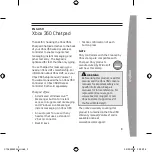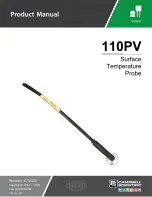
D8 Series User’s Guide
163
Default Parameters
The programmed instructions that are
permanently stored in the microprocessor
software.
Derivative Control (D)
The last term in the PID algorithm. Action that
anticipates the rate of change of the process
and compensates to minimize overshoot
and undershoot. Derivative control is an
instantaneous change of the control output in
the same direction as the proportional error.
This is caused by a change in the process
variable that decreases over the time of the
derivative. The derivative is expressed in
seconds.
Deutsche Industrial Norms (DIN)
A set of technical, scientific and dimensional
standards developed in Germany. Many DIN
standards have worldwide recognition.
Deviation Alarm
See High Deviation Alarm, Low Deviation Alarm.
DeviceNet™
DeviceNet™ is a network that connects
industrial devices. DeviceNet™ is designed to
provide a cost-effective and robust solution to
device networking. DeviceNet™ is designed
to transport control-oriented information
associated with low-level devices and other
information related to the system being
controlled, such as configuration parameters.
Digital-to-Analog Converter (DAC)
A device that converts a numerical input signal
to a signal that is proportional to the input in
some way.
DIN
See Deutsche Industrial Norms.
Direct Action
An output control action in which an increase in
the process variable causes an increase in the
output. Usually used with cooling applications.
Direct Current (DC)
An electric current that flows in one direction.
Distributed Zero Crossing (DZC)
A form of digital output control in which the
output on/off state is calculated for every ac
line cycle. Power is switched at the zero cross,
which reduces electrical noise. See also Zero
Cross.
DZC
See Distributed Zero Crossing.
E
Earth Ground
A metal rod, usually copper, that provides an
electrical path to the earth, to prevent or reduce
the risk of electrical shock.
EIA/TIA
Electronic Industries Alliance (EIA) and
Telecommunications Industry Association (TIA).
See also Serial Communications.
EIA/TIA-232
— A standard for interface
between data terminal equipment and
data communications equipment for serial
binary data interchange. This is usually for
communications over a short distance (50
feet [15 m] or less) and to a single device.
EIA/TIA-485
— A standard for electrical
characteristics of generators and receivers
for use in balanced digital multipoint systems.
This is usually used to communicate with
multiple devices over a common cable or
where distances over 50 feet (15 m) are
required.
Electrical Noise
See Noise.
Electromagnetic Interference (EMI)
Electrical and magnetic noise imposed on a
system. There are many possible causes, such
as switching ac power inside the sine wave. EMI
can interfere with the operation of controllers
and other devices.
Electrical-Mechanical Relays
See Relay, Electromechanical.
Содержание Controller Series D8
Страница 1: ...D8 Series User s Guide...
Страница 152: ...D8 Series User s Guide Chapter 7 Troubleshooting and Reconfiguring 152...
Страница 178: ...D8 Series User s Guide 178 Declaration of Conformity...
















































